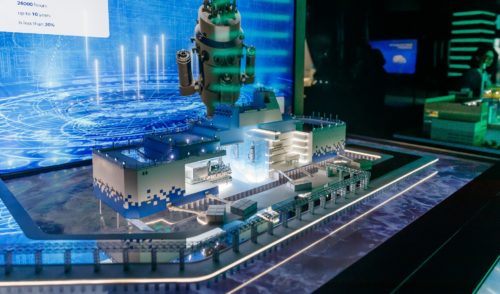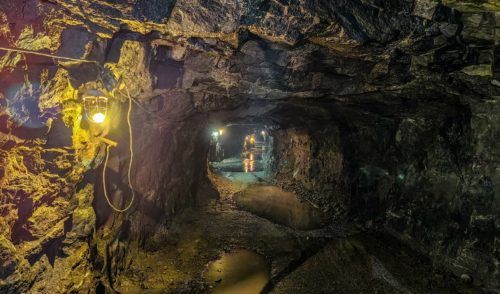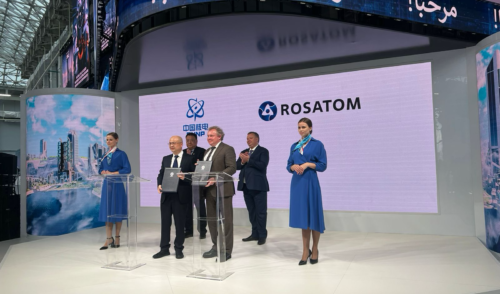
New Power Units Are Round the Corner
back to contentsThe beginning of the Tianwan NPP second stage construction is another milestone in cooperation between Russia and China.
Before the New Year Rosatom was working hard abroad . On December 27 in Lianyungang city a historic event took place – the concreting of the base of power unit 3 of the Tianwan NPP. This was the beginning of phase 2 of the plant construction designed in Russia.
Tianwan NPP, situated on the coast of the Yellow Sea is the largest object today in the two countries economic cooperation. The investments into construction of the first power units exceeded $3 billion. Chinese atomic scientists noted, and not just once, that the first two power units of the station are the most up-to-date and the safest in the country.
The fast growing market of China is strategically important for Rosatom, whose position there is quite firm. Besides phase 1 of the Tianwan NPP the fast breed research reactor CEFR, also built with the participation of the Russian side, is already put into operation. Phase 4 of gas centrifuge plant, where Russia supplied its equipment and is in charge of the project design, was completed ahead of schedule.
Previously the cooperation between the RF and China had been based upon separated agreements. In summer 2012 the collaboration started to look forward to a better prospective. During the visit of the president of Russia Vladimir Putin to Beijing the two parties initiated the “roadmap” of their nuclear partnership, on which they had been working for quite a while. The agreements made for phase 1 of the Tianwan NPP were adapted for units 3 and 4 as well. The document also contains agreements on partnership for type BN-800 fast breeder reactors construction in PRC.
New power units in China, designed in Russia, are to come soon. At the ceremony dedicated to concrete pouring of the new unit, Alexander Loshkin, the Deputy Director of Rosatom, said that starting from the middle of January the parties are to begin their negotiations over prospective of construction of new NPPs in China, designed in Russia. “We can say that the negotiations are passing to a new level. We hope from now on they will become more practical than political… The subject is not only Tianwan but also some other possible sites” – said Loshkin. He also reminded that the preliminary agreement on building of power units 5-8 of the NPP was achieved at the meeting of the PRC and RF heads of governments in December. We hope that the coming year will prove even more fruitful for the two countries partnership.
Rooppur NPP Will be Built
Right after the New Year vacations Rosatom also actively joined the works on construction of the Rooppur NPP done together with the People’s Republic of Bangladesh . On January 15, during an official visit of Sheikh Hasina Wazed, the Prime Minister of Bangladesh, to Russia, a number of agreements on the project were achieved.
Let us remind our readers, that in November 2011 Russia and Bangladesh signed an intergovernmental agreement to build the first nuclear power plant in Bangladesh. The NPP will consist of two units designed in Russia with the power of 1000 MW each. After the official meeting with Sheikh Hasina Wazed the president of the RF Vladimir Putin said that Russia would provide the credit of $500 million for the initial stage of the NPP construction. “Not only will we provide the most modern technologies, but we will also give some financial help for the initial stage of construction. This will be a $500 million credit” – Putin said.
According to Sergey Kiriyenko, Rosatom General Director, the work on site will start as early as January 1 of the next year, and the main stage of construction – in 2015.“In the first quarter of 2013 we are to sign the contract for site investigation, investment feasibility study and environmental impact assessment… in the second quarter we are to sign the technical design contract and the works on the technical design will start and will be done during the following two years. In the third quarter a contract for site preparatory works will be signed”, – said Kiriyenko.
The preparatory works will be finished by 2015, with the main stage of construction to follow. It will last for about 5 years. Two power units of 1000 MW each are planned to be built. “In 2015 the main stage will start. It will last for 5 years approximately. That’s why we can say that the station will be launched at the beginning of 2020-ies” – said Kiriyenko. According to the Director of Rosatom, the NPP in Bangladesh will meet “post-Fukushiman requirements”. “The design we offered to Bangladesh is absolutely up-to-date and well tested. That means that we are going to build the station of the so-called “post-Fukushiman type” – said Kiriyenko. The NPP is to endure both an earthquake and a tsunami of the highest force at the same time.
Atomic Enlightenment
However that is not all. The parties also signed an agreement to create an Atomic Energy Information Centre in Dhaka. The centre is needed to educate the Bangladeshi population on principles of functioning of the nuclear industry and prospects of nuclear power development, as well as raise prestige of nuclear-related trades among young people. The Information Centre will be a modern, high technology movie theatre which combines a panoramic 3D view, computer graphics and animation, stereo sound, interactive consoles and personal displays. The centre’s aids include basic educational programs on the nature of atomic energy as well as informative programs on astronomy and country studies.
Rosatom plans to expand the network of information centres abroad, in the countries which use Russian technologies to build nuclear industry facilities. The Bangladesh centre is planned to become the third in the overseas network (after Vietnam and Turkey) and will start operating in 2013. It will be located in the country’s capital Dhaka in the building of the planetarium (Bangabandhu Sheikh Mujibur Rahman Novo Theatre).




